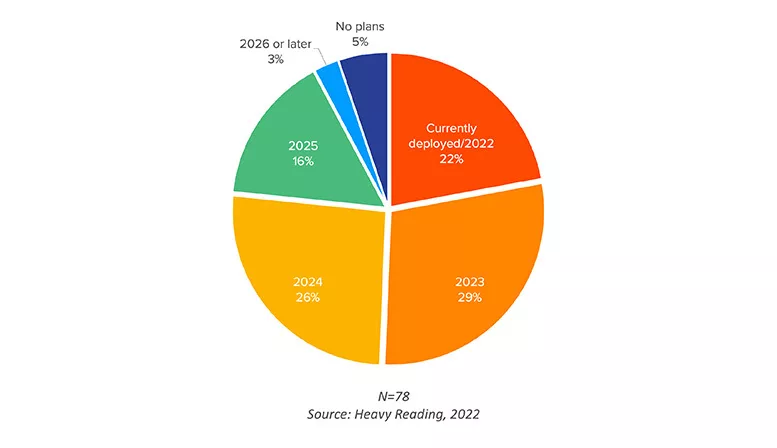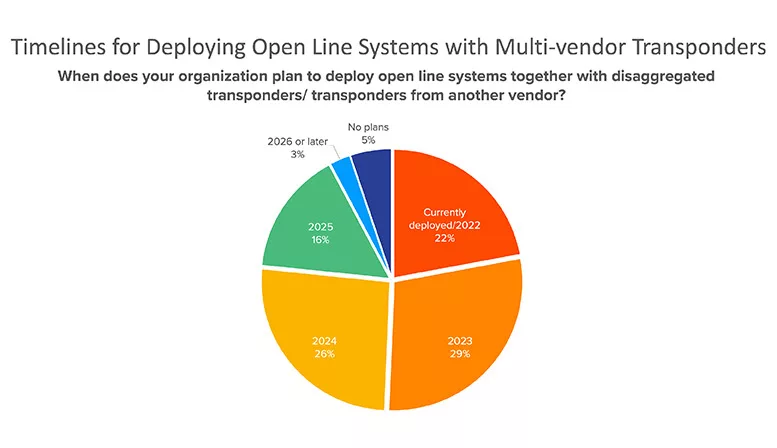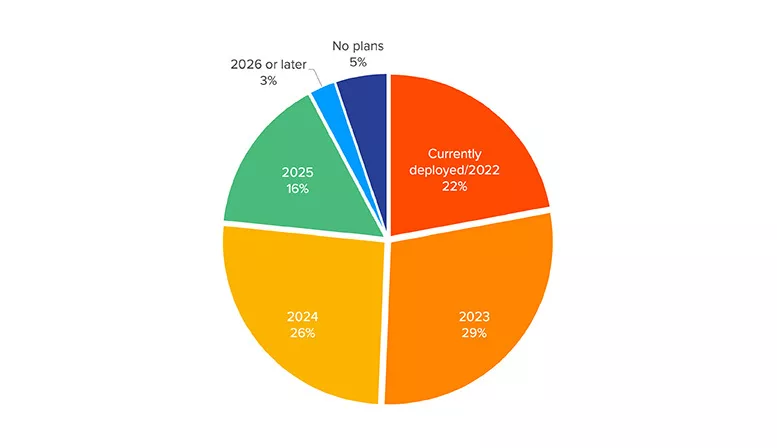The deployment of optical engines, be they transponders or coherent optical pluggables, from one or multiple equipment suppliers over a line system from a different supplier offers valuable benefits that network operators cannot afford to ignore, says Teresa Monteiro, director of marketing at Infinera.
Open networking offers access to a wider choice of solutions, de-risking supply chain and quality issues and ensuring business continuity. In a competitive environment where suppliers keep investing in higher-performing optical engines but follow different strategies and development cycles to bring them to market, open networking enables operators to introduce innovation into their networks faster. With more choice, faster innovation, and improved network economics, open optical networking gives network operators the ability to be more competitive.
It all started under the water
The adoption of open optical networking started around 2010 in submarine cables, where deployment of new fiber is extremely costly and complex and no capacity can go to waste. The introduction of new transponder generations over legacy cables brings a boost to available bandwidth and prolongs their economic lifespan.

But the operation of a disaggregated network presents new challenges with respect to a closed network, where a single supplier offers a dedicated network management system developed specifically to work in conjunction with the deployed equipment.
Some submarine cable operators, eager to get more capacity out of their scarce resources with the move to open networking, were willing to take the hit and conform to an increase in operational complexity. But over the last decade, the role of over-the-top (OTT) service providers, such as Google, Meta, and Microsoft, grew significantly in the subsea domain; with their software know-how and in-house development of multi-vendor network management systems, OTTs were able to break down operational barriers. With them, open submarine cables became the norm.
OTTs were then also quick to extend the open paradigm to their terrestrial networks.
But how can more traditional communications service providers (CSPs), such as fixed-line, mobile, or cable operators or wholesalers, follow the open path while continuing to operate their networks in a seamless manner? Most CSPs have neither the means nor the willingness to implement their own multi-vendor management systems.
An appetite for open surely exists: in a recent operator survey, where the vast majority of participants were CSPs, half of respondents stated they are either already deploying open line systems with disaggregated transponders or planning to do so during 2023.
While this looks ambitious, many operators have been conducting proof-of-concept trials of open networking, and then progressing to small-scale deployments.
But operational issues may become a dealbreaker when scaling up open optical networks.
Coherent pluggables ramping up open networking
An important push for scaling up open optical networks is coming with the arrival of ZR, ZR+, and XR coherent pluggables, hosted in equipment other than traditional optical transport platforms, such as routers, switches, servers, or even 5G radio units. These coherent pluggables will be deployed, in many use cases, directly over DWDM (dense wavelength-division multiplexing) line systems usually referred to as IP over DWDM (IPoDWDM).

The new IPoDWDM open architecture is appealing because it drives CapEx (capital expenditures) down. But IPoDWDM can only be successful if there are means to ensure seamless operation of end-to-end networks and services, and uniform management regardless of the physical platforms where the pluggables are equipped.
The software automation toolkit
Wide open optical networking adoption by CSPs, be it with embedded and/or pluggable optical engines, requires a suitable software automation toolkit a software toolkit that is vendor agnostic and maintains the operational experience of a closed environment as networks open up and a variety of coherent optics from diverse suppliers are deployed over an optical line system.
A vendor-agnostic software automation toolkit interfaces all multi-vendor network elements of the same functional type in a uniform manner, with a common data model and well-defined interfaces. It offers the capabilities of a typical NMS (network management system), discovering the topology and connectivity of a multi-vendor network, providing network-wide visualisation and monitoring of all resources, and supporting the creation and management of end-to-end services and other operational workflows across platforms.
Vendor-agnostic network software typically also supports the functionalities of an optical domain controller, consolidating and abstracting the optical layer and exposing it through machine-to-machine automation APIs toward a hierarchical controller/OSS (operational support system) /back office.
This type of solution is only effective if it is built on the work developed by standards bodies and industry initiatives. Over the years, these entities have been defining architectural blueprints for network control, developing common data models, and standardising open APIs (application programming interface), effectively establishing the foundations for wide adoption of open networking.
These works include:
- ONF´s SDN (software-defined networking) architecture for transport networks and IETF’s Framework for Abstraction and Control of TE Networks (ACTN) specifications, defining a hierarchical control architecture for open transport networks.
- ONF Transport API (TAPI), which has been gaining traction as the leading standard API at the northbound interface (NBI) of optical network controllers, consolidating and abstracting the optical layer toward a hierarchical controller/OSS/back office and allowing optical automation applications to act on the network.
- OpenConfig, which implements consistent YANG-based network device data models and management protocols for vendor-neutral operation. OpenConfig currently offers well-rounded support for southbound interfaces (SBI) from optical network controllers toward transceivers and continues the work on comprehensive support for line system devices.

Community-driven organisations like the Optical Internetworking Forum (OIF) and Telecom Infra Project Open Optical and Packet Transport (TIP OOPT) group have also been key in the advancement of open networking. They identify priority use cases, define requirements for interoperability, document best practices, and participate in multi-vendor interoperability tests to demonstrate compliance of products and increase confidence in open optical networking. More recently, initiatives focusing specifically on the operationalisation of IPoDWDM, like TIP OOPT’s MANTRA subgroup and Open XR Forum, have also been publishing architectural definitions and management specifications.
Open optical networking is a reality that cannot be ignored by CSPs.
While some aspects of its operationalisation continue to be developed and commercialised, strong foundations have been in place for some time.
Enabled by industry initiatives that have brought together technology partners including end users, systems integrators, and vendors and fostered cooperation among them, valuable vendor-agnostic software automation solutions are available in the market today. These solutions offer operational simplicity and support scaling of open optical networking. Don’t hold back it’s time to put that software automation toolkit to work!
The author is Teresa Monteiro, director of marketing at Infinera.
About the author
Teresa Monteiro is director of marketing at Infinera, a global supplier of innovative networking solutions. In this role, she champions for Infinera’s software and automation solutions, with particular focus on management and control solutions (SDN), and analytics and machine learning techniques, helping network operators modernising and optimising their networks. Teresa has close to 20 years of experience in the telecommunication industry. Prior to Infinera, she held various senior engineering roles in packet-optical technologies at Siemens and product management positions at Coriant. Teresa received a PhD in Physics from the University of Hamburg, in Germany.
Comment on this article below or via Twitter: @VanillaPlus OR @jcvplus






